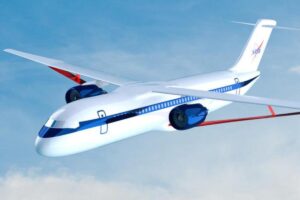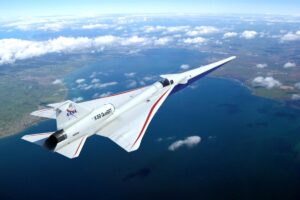1553 to RS-232 Conversion for Legacy System Compatibility
Executive Summary
Modern military and aerospace systems must often bridge the gap between legacy equipment and current data bus standards. One of the most common challenges involves converting MIL-STD-1553 bus data to RS-232, a serial protocol still in use within various legacy systems. This white paper explores the technical challenges and viable solutions for implementing a seamless and reliable conversion process between these two protocols. Emphasis is placed on electrical and protocol-level differences, signal integrity, use cases, converter types, and implementation strategies within military, aerospace, and industrial environments.
Table of Contents
-
Introduction
-
Overview of MIL-STD-1553
-
Overview of RS-232
-
The Need for MIL-STD-1553 to RS-232 Conversion
-
Technical Challenges in 1553 to RS-232 Conversion
-
Conversion Architectures and Approaches
-
Signal Level Conversion and Isolation
-
Timing and Synchronization Considerations
-
Software Protocol Translation
-
Converter Hardware Solutions
-
Integration in Legacy and Mixed-System Environments
-
Case Studies
-
Design Best Practices
-
Testing and Validation
-
Future Considerations
-
Conclusion
1. Introduction
Technological evolution in avionics and defense systems often leaves a significant number of legacy subsystems in operational use. These legacy systems, many of which rely on RS-232 serial communication, must interact with modern subsystems based on more advanced standards like MIL-STD-1553. This interaction necessitates robust protocol conversion mechanisms that ensure data integrity, timing synchronization, and electrical compatibility.
1553 to RS-232 converters serve as critical interface components in mixed-technology systems, enabling ongoing utility of RS-232-based equipment while integrating with MIL-STD-1553 mission-critical networks. This white paper discusses how to achieve this integration through technical design, architectural considerations, and best practice implementation.
2. Overview of MIL-STD-1553
MIL-STD-1553 is a military-standard data bus protocol developed in the 1970s for aircraft avionics. It is characterized by:
-
Dual-redundant, balanced differential signal transmission
-
1 Mbps data rate
-
Deterministic and command/response communication protocol
-
Use of Bus Controller (BC), Remote Terminals (RT), and Bus Monitors (BM)
-
Transformer-coupled transmission for signal integrity and noise immunity
-
Manchester II bi-phase encoding
The standard provides reliable, fault-tolerant communication ideal for harsh aerospace and military environments.
3. Overview of RS-232
RS-232 (Recommended Standard 232) is a long-standing asynchronous serial communication protocol developed in the 1960s. It is defined by:
-
Unbalanced, single-ended voltage signaling
-
Point-to-point configuration (usually DTE to DCE)
-
Variable baud rates, commonly from 9600 to 115200 bps
-
Lack of inherent error correction or time synchronization
-
ASCII or binary data transmission with start/stop bits
RS-232’s simplicity and low cost have kept it in widespread use across industrial and legacy military systems.
4. The Need for MIL-STD-1553 to RS-232 Conversion
Legacy system retention is often necessary due to:
-
High replacement costs
-
Long qualification and certification processes
-
Physical constraints within retrofitted platforms
As such, maintaining interoperability between modern MIL-STD-1553 networks and RS-232-based subsystems becomes vital. Specific needs include:
-
Upgrading flight computers without replacing all connected subsystems
-
Integrating RS-232 sensor nodes into new avionics buses
-
Bridging ground support equipment (GSE) and test benches
5. Technical Challenges in 1553 to RS-232 Conversion
Conversion between these protocols introduces several challenges:
Electrical Incompatibility
-
MIL-STD-1553 uses ±1V differential signaling; RS-232 uses ±3V to ±15V single-ended.
-
Transformer coupling in 1553 vs. direct electrical connection in RS-232.
Timing Differences
-
1553 is synchronous and deterministic; RS-232 is asynchronous.
-
Need for accurate timing reconstruction to prevent data loss.
Protocol Complexity
-
1553 has structured messages with command words, status words, and data blocks.
-
RS-232 lacks framing or structured control words.
Data Throughput Mismatch
-
1553 transmits data in blocks; RS-232 typically sends one byte at a time.
-
Conversion must buffer and serialize data appropriately.
6. Conversion Architectures and Approaches
There are two major approaches to MIL-STD-1553 to RS-232 conversion:
A. Hardware-Based Converters
These dedicated units perform real-time electrical and protocol translation using:
-
Integrated microcontrollers or FPGAs
-
MIL-STD-1553 transceivers and transformers
-
RS-232 line drivers
B. Software-Based Translation
Implemented via embedded systems, where a software routine:
-
Parses 1553 bus data
-
Reformats into RS-232-compatible strings or packets
-
Sends via standard UART interface
Hybrid systems often combine both to maximize performance and flexibility.
7. Signal Level Conversion and Isolation
Electrically, converting MIL-STD-1553 to RS-232 requires:
-
MIL-STD-1553 transceivers (e.g., BU-65178, DDC BU-67114)
-
Line transformers for signal isolation and impedance matching
-
RS-232 transceivers (e.g., MAX232, SP232) to adjust voltage levels
-
Galvanic isolation to protect RS-232 devices from transients and ground loops
Isolation is essential in military environments to maintain system reliability and EMI compliance.
8. Timing and Synchronization Considerations
Given the synchronous nature of MIL-STD-1553, conversion systems must:
-
Decode Manchester-encoded data
-
Reconstruct byte sequences and timestamps
-
Buffer data for UART-based RS-232 transmission
-
Implement flow control (XON/XOFF or RTS/CTS) to prevent overruns
In mission-critical systems, timing fidelity is crucial for command execution and telemetry.
9. Software Protocol Translation
Proper translation involves mapping 1553 message elements to RS-232 format:
| 1553 Element | RS-232 Equivalent |
|---|---|
| Command Word | Packet Header |
| Data Words | Byte Stream |
| Status Word | Check Byte/ACK |
To ensure compatibility, message encapsulation strategies must be used, such as:
-
Start-of-Message (SOM) and End-of-Message (EOM) delimiters
-
CRC checksums or parity for error detection
-
Message IDs for correlation with 1553 commands
Translation software may also handle logging, filtering, and prioritization.
10. Converter Hardware Solutions
Several commercial off-the-shelf (COTS) and custom converter solutions exist:
A. COTS Devices
-
DDC BU-69090: 1553 to UART/RS-232 module
-
AIM MIL-STD-1553/RS-232 Gateway
-
Alta Data Tech converters
Advantages include quick deployment and military qualification.
B. Custom Converters
Embedded boards built with:
-
1553 interface ICs
-
ARM Cortex-M or FPGA cores
-
RS-232 line drivers
-
Custom firmware
Custom units allow tailored handling of application-specific data formats.
11. Integration in Legacy and Mixed-System Environments
Conversion systems are used across:
Military Aircraft
-
Connecting mission computers to legacy weapon systems
-
Translating maintenance data to ground RS-232 ports
Ground Vehicles
-
Facilitating communication between MIL-STD-1553 vehicular networks and RS-232-based radios or displays
Spacecraft
-
Bridging scientific payloads with control buses
Test and Simulation
-
Feeding MIL-STD-1553 traffic into RS-232-based analysis tools
In such environments, ruggedization, EMI shielding, and compliance with MIL-STD-461 are crucial.
12. Case Studies
Case Study 1: Fighter Jet Fire Control Upgrade
An aging fire control computer on a fourth-generation fighter used RS-232 for sensor data input. A mission computer upgrade added a MIL-STD-1553 interface. A converter was developed to translate 1553 target data into the RS-232 format the fire control computer expected. Result: system integration without replacing the fire control unit.
Case Study 2: Spacecraft GSE Integration
A ground station used RS-232-controlled test equipment to validate telemetry data from a 1553-based spacecraft bus. A software-configurable converter allowed test engineers to simulate 1553 commands and receive status over a familiar RS-232 interface.
Case Study 3: Naval System Legacy Support
Onboard ship systems required integration of a legacy RS-232 depth sensor into a 1553 network. A compact converter interfaced directly with the MIL-STD-1553 bus, enabling continued use of the sensor without modification.
13. Design Best Practices
When designing or selecting a 1553 to RS-232 converter:
-
Ensure Protocol Conformance: Adhere to MIL-STD-1553B specifications and RS-232 EIA/TIA standards.
-
Support Message Filtering: Only pass relevant 1553 messages to RS-232 outputs.
-
Provide Robust Logging: Enable debugging and diagnostics for message conversion.
-
Design for Rugged Environments: Include ESD protection, thermal stability, and EMI shielding.
-
Allow Configurability: Adjustable baud rates, parity settings, and message formats aid in system compatibility.
Use of modular firmware and field-upgradable devices increases adaptability.
14. Testing and Validation
Before deployment, converters should be validated using:
-
Bus Analyzers: Tools like Excalibur or Ballard analyzers to inspect 1553 signals.
-
Loopback Tests: Ensures round-trip data integrity and protocol compliance.
-
Timing Analysis: Verifies synchronization and latency between 1553 and RS-232 events.
-
Environmental Testing: Confirms performance under vibration, temperature extremes, and EMI exposure.
Qualification to MIL-STD-810, MIL-STD-461, and DO-160 (if applicable) may be necessary depending on use case.
15. Future Considerations
As systems continue to modernize:
-
Protocol bridges may increasingly incorporate AI-driven translation for adaptive data mapping.
-
Use of networked protocol converters (e.g., 1553 to Ethernet to RS-232) will expand in distributed systems.
-
Transition to more software-defined interfaces will enable easier legacy support through virtualization.
However, RS-232 will likely remain in use for niche applications well into the next decade, ensuring that 1553 to RS-232 conversion will continue to be relevant.
16. Conclusion
In defense, aerospace, and industrial systems, the need to integrate legacy RS-232 subsystems with modern MIL-STD-1553 buses is a common and critical engineering challenge. By understanding the electrical and protocol differences, implementing robust hardware and software translation mechanisms, and adhering to design best practices, engineers can build reliable converter solutions that extend the life and utility of legacy systems.
As legacy platforms remain operational, efficient and compliant 1553 to RS-232 conversion will continue to play an essential role in mission readiness and system compatibility.





